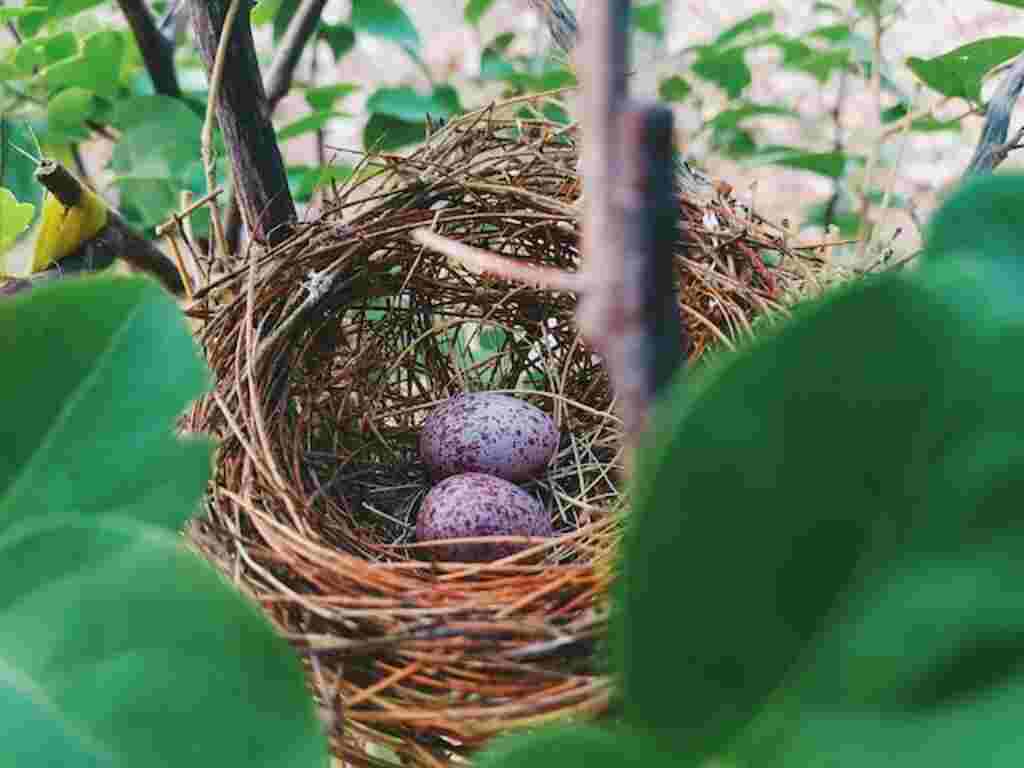As night falls and the world quiets down, have you ever wondered: Do birds actually build nests after dark? Let’s embark on a journey together to uncover the truth behind this mystery. Join us as we explore the fascinating world of avian behavior when the sun sets, and find out whether our feathered friends are busy constructing their nests while we sleep.
Table of Contents
- 1 Do Birds Build Nests At Night?
- 2 Importance of Understanding Bird Behavior and Nesting Habits
- 3 Brief Overview of the Article’s Content
- 4 Bird Nesting Habits
- 5 The Myth of Birds Building Nests at Night
- 6 Bird Activity During Nighttime Hours
- 7 Exceptions to the Rule: Birds That Build Nests at Night
- 8 How These Exceptions Relate To The Overall Understanding Of Bird Behavior
- 9 Conclusion
- 10 FAQs: Do Birds Build Nests At Night?
- 10.1 Do birds build nests at night?
- 10.2 Why do birds build nests during the day?
- 10.3 Are there any birds that build nests exclusively at night?
- 10.4 What are the advantages of building nests during the day?
- 10.5 How long does it take for birds to build a nest?
- 10.6 What materials do birds use to build nests?
- 10.7 How do birds learn to build nests?
- 10.8 Do all birds build their own nests?
- 10.9 How often do birds reuse their nests?
- 10.10 What happens to the nests after the breeding season?
- 11 Author
Do Birds Build Nests At Night?
Birds are fascinating creatures that have unique behaviors and habits. One question that often arises is whether birds build nests at night.
This enduring belief has been handed down through the ages, becoming a common myth that many still hold true. It is important to understand the truth about this myth and why it matters.
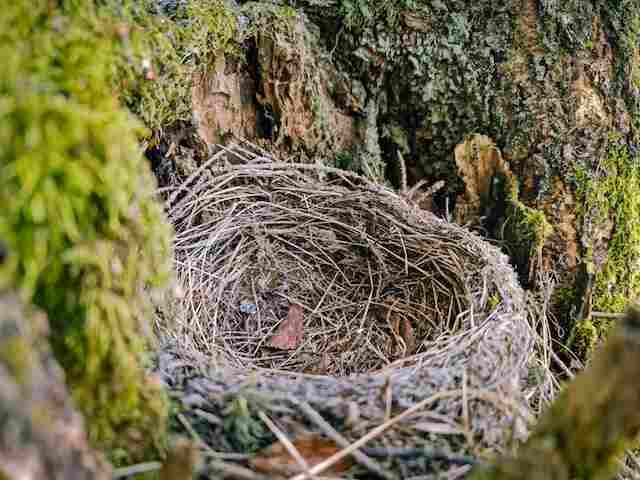
Importance of Understanding Bird Behavior and Nesting Habits
Understanding bird behavior and nesting habits can help us appreciate these creatures better, aid conservation efforts, and promote their survival.
Different bird species have unique behaviors, habitat requirements, and nesting preferences.
By understanding these factors, we can learn how to protect their habitats, provide nesting materials or boxes in our backyards, and avoid disturbing their breeding cycles.
Brief Overview of the Article’s Content
This article will explore the myth of whether birds build nests at night in detail. We will examine different bird species’ behavior during nighttime hours and compare them to diurnal activities.
We will also look at exceptions to the rule such as some nocturnal species that do build nests at night.
We will provide readers with a summary of what we have learned throughout this article about birds’ behavior during nighttime hours.
Understanding bird behavior is critical for appreciating these creatures better while promoting conservation efforts necessary for their survival.
The next section of this article will discuss typical bird nesting habits before examining the myth surrounding birds building nests at night in more detail further on in the text.
Bird Nesting Habits
Birds are known for their fascinating nesting habits. Nest building usually occurs during the breeding season, which can vary from species to species, depending on climate, available food supply, and daylight hours.
Bird nesting habits can also be influenced by a range of factors including habitat and geographic location. There are many different types of nests that birds build and their construction techniques can vary widely.
Overview of typical bird nesting habits
The majority of bird species build nests in order to lay their eggs and raise their young. Nests come in all shapes and sizes, ranging from simple scrapes on the ground to elaborate structures high up in trees or perched on cliff faces.
The materials used for nest building also vary between species, with some birds using twigs, grasses, or leaves while others use mud or even spider webs.
Most birds display extraordinary skill when it comes to constructing their nests.
They often spend long hours gathering materials and carefully arranging them to create a sturdy structure that can withstand weather conditions and predators.
Factors that influence nesting behavior
There are many factors that influence bird nesting behavior such as species, habitat, availability of resources, and seasonality.
For example, tree-dwelling birds may build their nests high up in trees because it provides protection from predators while ground-nesting birds might seek out areas with dense vegetation where they can hide their nests.
Weather conditions are also an important factor in determining when a bird will start nest building.
Birds typically start building nests when temperatures rise above freezing point as this is when insects become more abundant providing adequate food supply for the growing hatchlings.
The availability of resources like twigs or other materials used for building the nest is also an important factor influencing nesting behavior.
Some birds may reuse old nests while others may build entirely new ones each breeding season.
Explanation of why birds build nests in the first place
Birds build nests as a way of providing a safe and secure environment for their eggs and hatchlings. The purpose of the nest is to protect the developing embryos from harsh weather conditions, predators, and other threats.
Nests also serve as a way for parents to maintain contact with their young, provide food and keep them warm. The act of nest building itself can also be seen as a display of mating prowess by males.
A well-constructed nest can attract females while also providing an opportunity for males to demonstrate their strength, skill, and creativity.
Bird nesting habits are complex and fascinating. Understanding these behaviors can provide valuable insights into the lives of these amazing creatures and help us appreciate the importance of preserving their habitats.
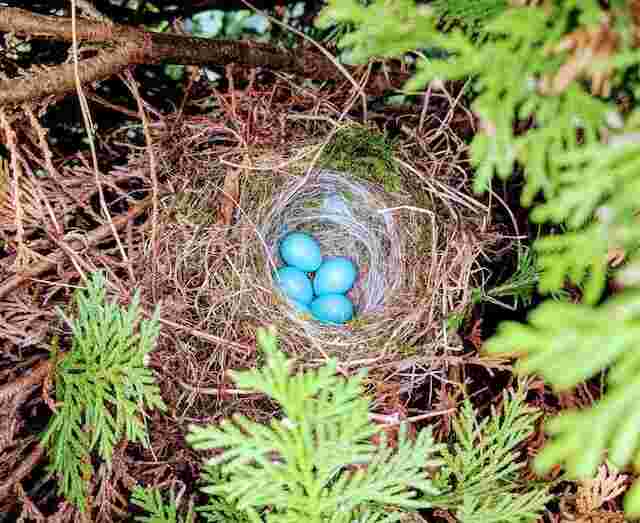
The Myth of Birds Building Nests at Night
Explanation of the Myth
One of the most prevailing myths about bird behavior is that they build their nests at night. This myth has been around for centuries, and it is still believed by many people today.
The idea is that birds work throughout the darkness to build their nests without being seen by predators or disturbing their sleeping partners. However, this concept doesn’t hold up to scientific scrutiny.
Historical Origins and Cultural Significance of this Myth
The myth that birds build nests at night has its roots in several cultures worldwide, including European, Asian, and African traditions.
For example, in ancient Greece, it was believed that a particular breed of bird called the “Ceyx” would only build its nest during the darkest hours of the night.
Similarly, in Africa, there is a legend about a species of owl that creates its home exclusively during nighttime hours.
This myth has also been perpetuated by popular culture. In literature and film, birds are often depicted as creatures who work throughout the night constructing their homes with remarkable speed and diligence.
Scientific Evidence Debunking this Myth
Despite these beliefs and cultural practices associated with building nests at night, scientific evidence shows otherwise.
Birds are diurnal animals who are active mainly during daylight hours when they can find food easily using their excellent eyesight.
They rely on sight to pick out materials to use for nest building; therefore building a nest in total darkness would be very challenging.
Furthermore, scientists have observed many bird species nesting in broad daylight – it’s much easier for them to see what they’re doing!
Some birds also engage in complex courtship displays or vocalizations during daylight hours while building their nests as part of mating rituals.
Overall scientific findings prove very little support for this myth giving insight into how our culture and history often perpetuate myths without valid scientific evidence.
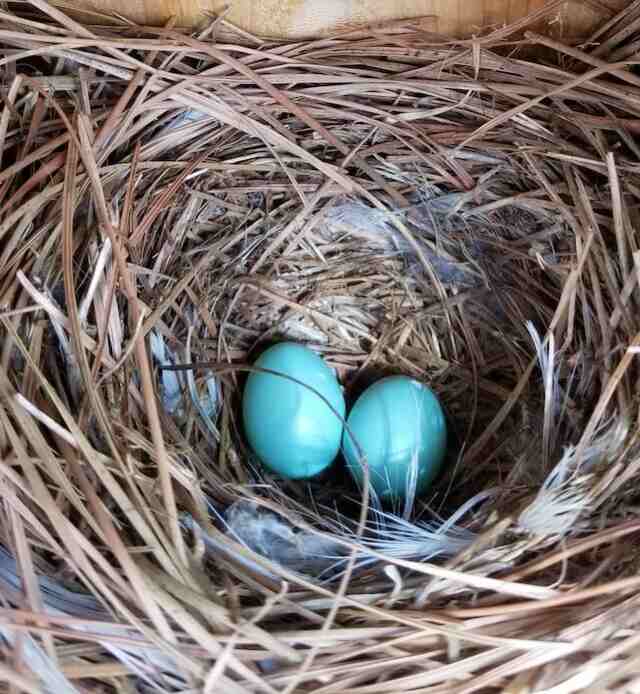
Bird Activity During Nighttime Hours
Birds are well-known for being active during the daytime when they are typically seen flying, foraging, and carrying out various other activities.
However, some species of birds are also active at night, taking advantage of the cooler temperatures and quieter environments to carry out their daily tasks.
In this section, we will explore the world of nocturnal birds and compare their behaviors to those of diurnal birds.
Overview of bird activity during nighttime hours
While it is true that most birds are inactive at night and roost in trees or other sheltered locations, there are some species that stay active throughout the night.
Nocturnal birds have eyes that are adapted to low light conditions and rely on their keen sense of hearing to locate prey.
Some species use echolocation to navigate in complete darkness. Some examples of nocturnal birds include owls, nighthawks, nightjars, and certain species of parrots.
Examples of nocturnal birds and their behaviors
Owls, the renowned creatures of the night, hold the title of the most famous nocturnal birds. They hunt in complete darkness by using their incredible vision and silent flight technique that allows them to sneak up on prey undetected.
Nighthawks can often be seen flying over cities at night catching insects with their wide-open mouths while diving from high altitudes.
Nightjars also feed on insects but they do so by sitting silently on branches until an insect flies close enough for them to snatch it up with a quick snap of their beak.
Parrots like the Kakapo from New Zealand have evolved into a fully-fledged nocturnal lifestyle due to predation pressure from mammals like rats that were introduced into their habitat by people.
It feeds exclusively at night on native plants after climbing high up into trees where it feels safe from predators.
Comparison to diurnal birds and their behaviors
Diurnal birds have adapted to feed, mate, and carry out other activities during daylight hours.
They have evolved adaptations such as powerful wings that allow for flight over long distances, specialized beaks that enable them to catch prey in flight or manipulate different food sources, and keen vision that helps them to locate prey from afar.
Some examples of diurnal birds include eagles, hawks, falcons, songbirds, and waterfowl.
Compared to nocturnal birds, diurnal birds tend to be more social in nature and often engage in complex mating rituals or vocalizations.
Many species also form flocks for protection against predators or during migration.
However, diurnal birds are also heavily impacted by human activity such as habitat loss due to urbanization or climate change.
Understanding the unique habits of both nocturnal and diurnal bird species is important for conservation efforts as well as for appreciating the diversity of avian life on our planet.
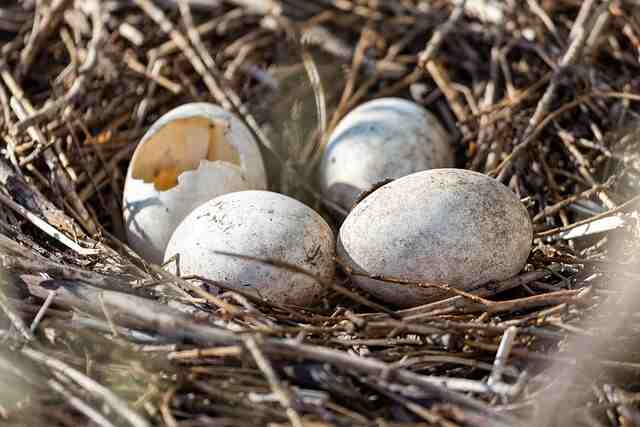
Exceptions to the Rule: Birds That Build Nests at Night
While most birds build nests during daylight hours, there are a few exceptions to this general rule. These species have unique adaptive behaviors and ecological niches that require them to build nests at night. Here are some of the birds that build nests at night:
The Oilbird
The Oilbird is a nocturnal bird found in caves of South America and Trinidad. These birds rely on echolocation to navigate through the dark caves where they live. They also use it to locate food, which consists of fruits such as figs and palms.
Oilbirds build their nests in complete darkness, using their sense of touch and smell instead of sight. They construct their nest on the walls or ceilings of caves using twigs, mud, and other materials they find in their environment.
The Common Poorwill
The Common Poorwill is a bird species found throughout North America that is active during the night. It spends most of its time on the ground, where it forages for insects.
The Common Poorwill builds its nest on rocky ledges or underbrush in open areas such as deserts or grasslands. The nest is made up of twigs, leaves, and grasses woven together into a shallow cup-like structure.
The Kakapo
Kakapos are large parrots native to New Zealand that are flightless and nocturnal. Their habitat includes dense forests with low light levels where they feed on leaves, berries, seeds, bark, and roots.
Kakapos create nesting sites by digging burrows into soft soil or rotting wood which can be up to 30cm deep beneath fallen logs or tree roots for safety from predators like rats and stoats.
Kakapos nests are lined with twigs, branches, leaves, and feathers.
The Black Swift
The Black Swift is a small bird known for its swift flight patterns during the night. It is found in North America and South America rocky outcrops and cliffs near running water. The Black Swift builds its nest on steep slopes or cliffsides close to water sources.
The nests are made of mosses held together by spider webs or other sticky materials. The birds use their saliva to glue the materials together to create a stable structure for their eggs and young.
While these four examples show that some birds do build nests at night, it’s important to note that they are rare exceptions to the rule.
Most birds build their nests during daylight hours as it is safer and easier for them to work when there is more light available.
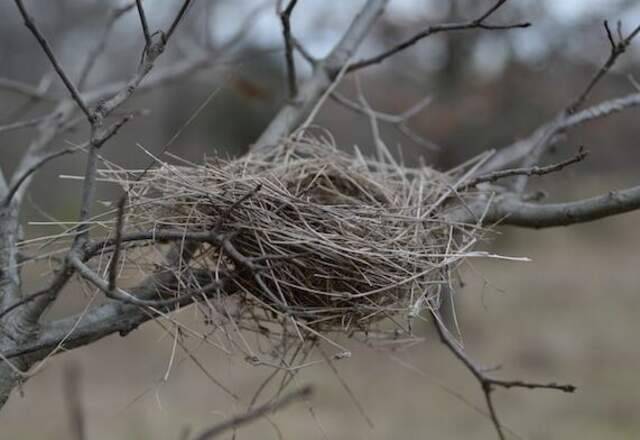
How These Exceptions Relate To The Overall Understanding Of Bird Behavior
Studying these exceptions provides valuable insight into bird behavior, including how they adapt to environmental conditions and use unique strategies to survive in their habitats.
By understanding how certain species have evolved over time, we can better understand why they behave the way they do.
Furthermore, observing birds that build nests at night can provide new avenues of research in different fields such as ecology, evolution biology, and animal behavior.
Their adaptations may provide models for biomimicry designs in architecture or engineering that could help humankind overcome obstacles relating to habitat loss or climate change using animals’ behavior as inspiration.
Although most bird activities occur during daytime hours under clear lighting conditions; looking at these rare exceptions reveal some fascinating insights into avian behavior which can ultimately help us better understand our natural world as a whole.
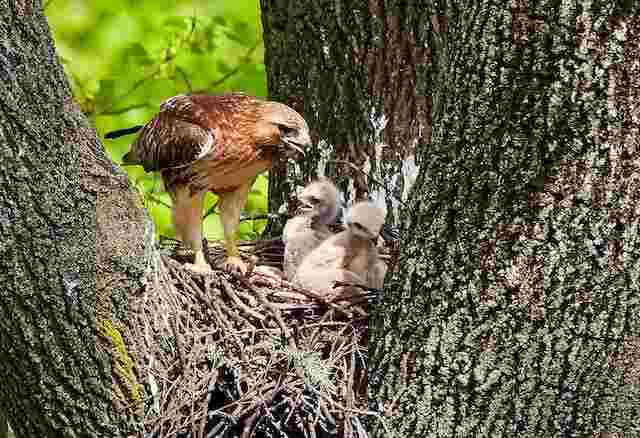
Conclusion
Reiteration that most birds do not build nests at night.
After exploring the myth of birds building nests at night and understanding bird nesting habits, it is clear that most birds do not build their nests during the nighttime hours.
The belief that many people have about birds’ nocturnal activity has been debunked by scientific evidence. Birds are active during the day and sleep at night, just like most other animals.
Importance of understanding bird behavior
Understanding bird behavior and nesting habits is crucial to conserving these fascinating creatures. By learning more about their lives, we can better protect their habitats, which are often threatened by human activities such as deforestation and urbanization.
Preserving these habitats will help ensure that birds have access to the resources they need to survive. Additionally, knowing when birds build their nests can help us avoid disturbing them during the critical time when they are raising their young.
This can be achieved through education efforts aimed at raising awareness about bird behavior among the general public. Studying bird behavior can also teach us more about ecology and evolution.
Birds play a crucial role in maintaining ecosystems, serving as pollinators and seed dispersers, controlling insect populations, and providing food for predators higher up in the food chain.
While some species may build nests at night, it is not typical behavior for most birds.
Understanding bird behavior is crucial for conservation efforts and ecological research.
With further study of these fascinating creatures, we can learn more about our planet’s diverse ecosystem and ensure a sustainable future for all its inhabitants.
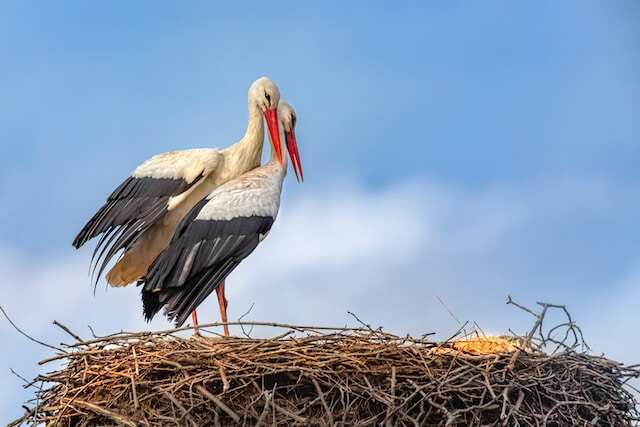
FAQs: Do Birds Build Nests At Night?
Do birds build nests at night?
No, most birds do not build nests at night. Nest building is primarily a daytime activity when birds have better visibility and access to food sources. However, there are a few exceptions, such as the night heron, that construct nests during nighttime hours.
Why do birds build nests during the day?
Birds build nests during the day to take advantage of optimal lighting conditions and to find materials necessary for construction, such as twigs, grass, or feathers. Daytime also offers better protection against nocturnal predators.
Are there any birds that build nests exclusively at night?
While most birds build nests during the day, a few exceptions exist. For example, the night heron, an elusive species, constructs its nests at night. These birds have adapted to the darkness and rely on their specialized night vision to complete their construction tasks.
What are the advantages of building nests during the day?
Building nests during the day allows birds to gather materials efficiently, navigate their surroundings more easily, and communicate with their mates. Daytime construction also provides better visibility for selecting suitable nesting locations and defending against potential threats.
How long does it take for birds to build a nest?
The time taken to build a nest varies among bird species. It can range from a few hours to several weeks, depending on factors such as the complexity of the nest, availability of suitable materials, and the experience of the bird in nest-building.
What materials do birds use to build nests?
Birds use a wide range of materials for nest-building, including twigs, leaves, grass, feathers, moss, mud, and even human-made materials like bits of string or fabric. Different bird species have unique preferences for materials based on their habitat and nesting requirements.
How do birds learn to build nests?
Nest-building is an instinctive behavior passed down through generations of birds. Young birds learn by observing their parents or other experienced birds in their species. They imitate the techniques and refine their skills over time to construct sturdy and functional nests.
Do all birds build their own nests?
No, not all birds build their own nests. Some birds, known as “cavity nesters,” prefer to use pre-existing cavities, such as tree hollows or abandoned nests, rather than constructing their own. They modify these spaces to create suitable nesting sites for their eggs and young.
How often do birds reuse their nests?
Birds may reuse their nests for multiple breeding seasons if the nests remain structurally sound and provide adequate protection. However, this varies among species. Some birds rebuild their nests each year, while others make minor repairs or additions to existing nests.
What happens to the nests after the breeding season?
After the breeding season, nests are often abandoned and left to deteriorate. They may serve as temporary shelters for other animals or gradually disintegrate over time. However, some nests, such as those constructed by migratory birds, are not reused and are left behind entirely.

